Chris Parkin brings out the big guns in the form of Ruger’s largest calibre RPR - the Ruger Precision Rifle in .338 Lapua Magnum - stretching this monster precision round out to 1km
Likes
Long chassis gives superb stability
Delightful bolt operation to minimise positional disturbance
Effective brake with zero concussive chassis resonance
Dislikes
The butt’s underside might benefit from smoothing out
Verdict
I found the Ruger to be surprisingly refined in use and feel, if perhaps not in terms of looks. I would go as far as to say it’s one of the most pleasant .338’s to use with superb recoil and noise handling with exceptionally tactile bolt operation. The biggest RPR has really grown into it’s skin and it’s £1000 cheaper than I expected, Bravo!
Contact
Viking Arms
Tel: 01423 780810
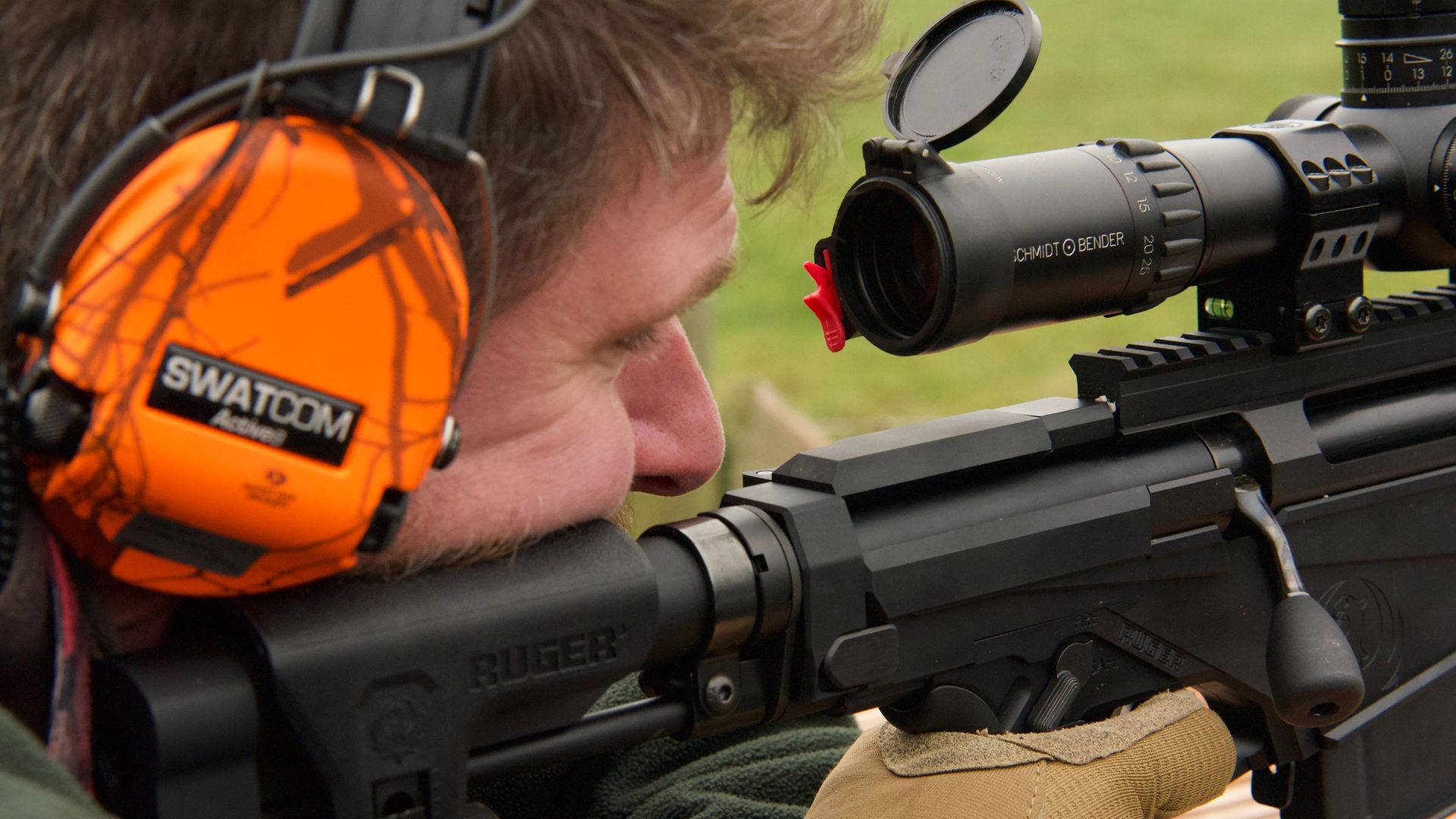 credit: Chris Parkin
credit: Chris Parkin
Review
After using the Ruger Precision Rifle (RPR) in many other calibres, ranging from .17 HMR up to .308, it was great to get hold of the largest .338 Variant. This heavy (for the UK) calibre isn’t the most common or one many people see or shoot. It’s certainly not the first .338 I have fully reviewed and have trialled many others and they all have a common factor to consider – it’s not the recoil, it’s the noise generated.
I have had a couple that were moderated but most are braked with corresponding factors to consider and I’m a stickler for protecting my hearing, so with a laterally ported brake, I went to WMS Firearms Training in Wales with nobody to disturb where I could exercise a .338 at longer ranges.
This RPR was box fresh in its padded carton. It’s a big chunk to lift out, at just under 8kg, and with a suitable scope and bipod added comes to 9kg/20lbs overall when ready to shoot. The first factor is the big Magnum muzzle brake which can be turned through slight rotation at the threaded muzzle to modify muzzle reaction to your taste. It’s a laterally ported unit with twin vents left and right directing blast almost perpendicular to the bore axis. It’s locked in position with Allen screws and a rear nut but the 3/4x24 thread beneath can also be used to add a moderator, if that is your preference; it would definitely be mine in the long term.
Mods don’t cut as much recoil as brakes but are a bit more sociable. Physical recoil from an unbraked or moderated .338 is tolerable from a heavy rifle anyway. The barrel is cold hammer forged with 5R rifling, which is supposed to offer gentle jacket handling and its 1 in 8.375" twist rate stabilises long bullets up to 300gr. The barrel is 23mm diameter at the muzzle with a slight taper towards the action through its 26"/660mm length.
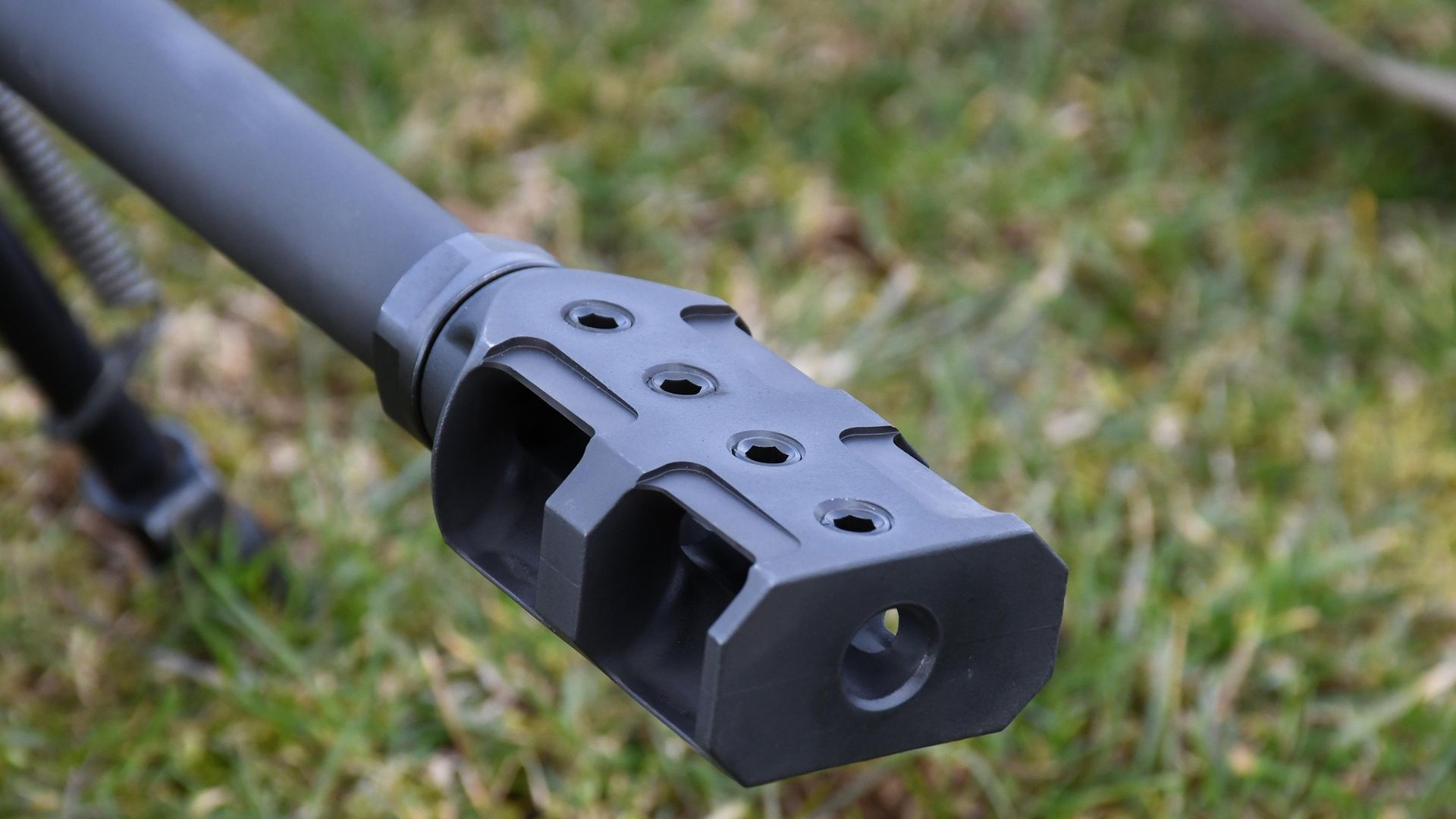 credit: Chris Parkin
credit: Chris Parkin
Rock solid construction
Minimum bore and groove dimensions, headspace and centralized chamber are advertised for maximised performance from the 4140 Chrome-Moly, rather than coated stainless steel. RPRs were one of the first mainstream chassis rifles with a proprietary stock from the maker, and here the octagonal forend is 58mm wide by 52mm tall. It extends 480mm/19" from the action’s face and shows masses of space for M-Lock accessories as well as a full-length underside 38mm dovetail compatible with RRS ‘S.O.A.R.’ and similar QD systems.
I had hoped to add a wide-stance Tier One bipod but, in the end, none were in stock so I added a good old-fashioned Harris. This itself led me to one very interesting and positive conclusion later in the review process!
Judging where the receiver begins and the chassis ends is a hard topic with the RPR as it was designed from concept as a homogenous rifle, not a combination of parts and this factor shows. The 4140-steel upper and 7075 aluminium lower are perfectly colour matched with the lower’s Type III Black Hard-Coat Anodized finish offering a tough surface. The bolt is the same chrome-moly steel to minimize distortion. The trigger is Ruger’s Marksman Adjustable unit with a weight range of (2.25 to 5lb). It’s a familiar design breaking in a single stage after take-up of the initial movement on the inner blade.
This one broke at a consistent 830 +/-20gr (30oz) with what I will describe as a 98% crisp feel with which I was more than happy. The extended trigger-reach AR-style grip gave a 60mm throat to blade stretch and the ambidextrous safety selector sits at the top with a 45 degree throw from safe/fire. Any AR-style grip and selector can be added if desired.
Construction is 100% solid with no rattles or movement, courtesy of excellent machining standards visible on the steel bolt and virtually zero flexibility in the tubular forend, which fully floats the barrel at all times.
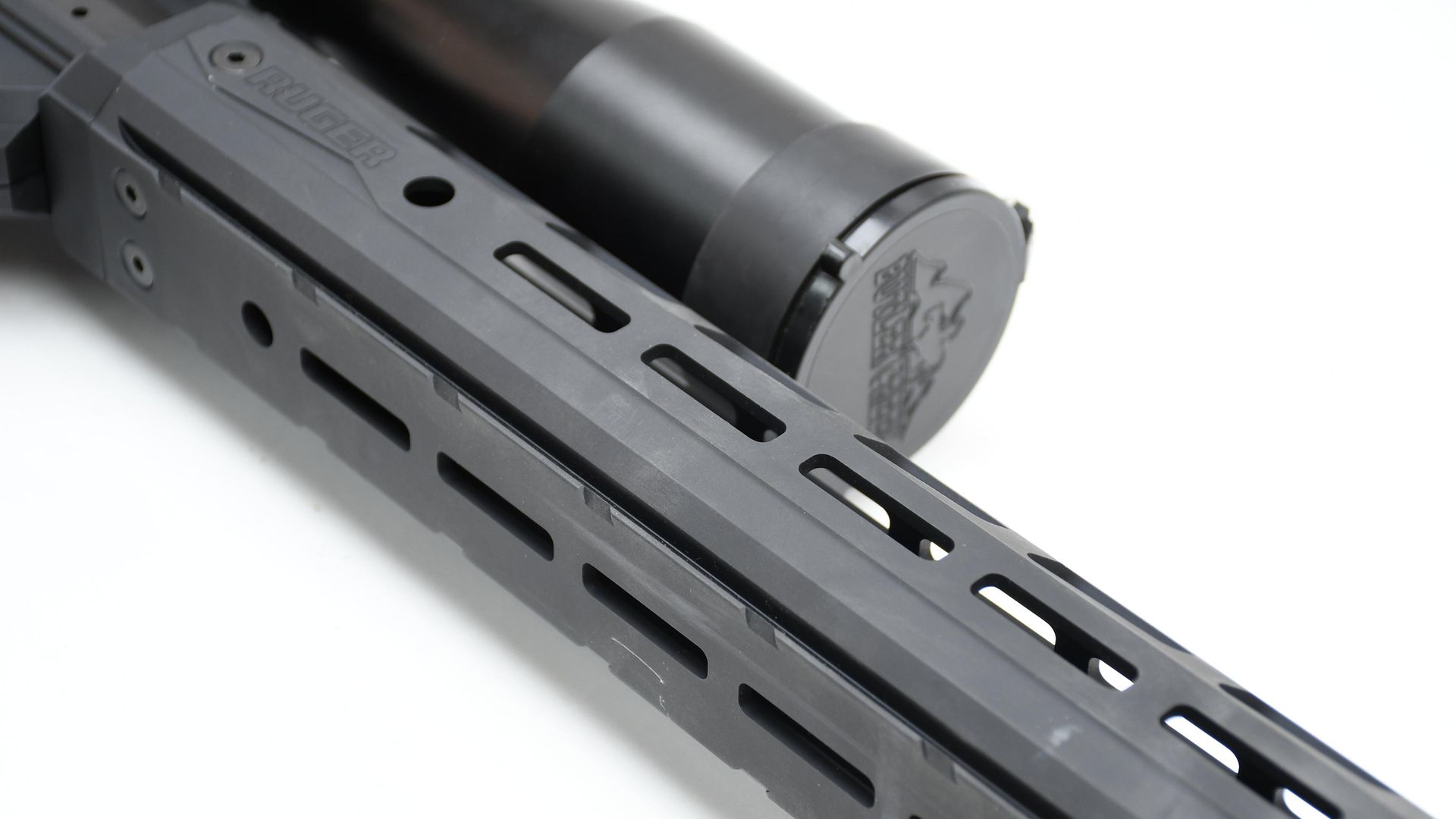 credit: Chris Parkin
credit: Chris Parkin
Long-range specialist
A 30 MOA Picatinny rail sits atop for simple scope mounting for this long-range-capable chambering. Using an AR15 type buffer tube with an underslung grip does increase the vertical size over that of a traditional blended sporting/varmint layout.
Ruger run the bolt’s shrouded rear end within the buffer tube to maintain a low profile to the rifle. This keeps recoil transit linear into the recoil pad to minimise lift while maintaining your head/scope alignment close above the borderline, all without an excessive top-heavy feel to the gun.
So many rifles these days look like a double decker bus with everything crammed into short, ‘free’, vertical space, yet when shot, they react poorly to muzzle torque and that is the delight of the RPR.
The stock folds, allowing bolt removal, which is less fuss than awkward cheekpiece adjustment/removal and also helps you fit this 48"/1,220mm long rifle (before the adjustable length of pull is considered), into a gun case or cabinet. Length of pull shows 4"/100mm of adjustment to offer from 13-17"/333-433mm from trigger blade to shoulder, which is about as large a range as any rifle I have used.
The cheekpiece offers linear as well as vertical adjustment for perfected head position and unlike those ‘tall’ guns I previously mentioned, does not need to be artificially high to overcome a skyscraper layout. One factor worth mentioning is that the left-side hinge can be very close to your nose if the stock is short with a low cheekpiece setting. I was initially concerned I might clash once the stock was set up correctly for me, but it never caused a problem. That hinge is 100% secure with a strong sprung detent and can be locked folded for ease of storage and cleaning. One nice factor is the bolt release catch on the left side is not obscured by the folded back end, something that can be annoying on other rifles. Here, it is on an angled facet of the receiver without restriction in either state.
All stock adjustments are controlled by toggling levers and opposing nuts to set absolute tension. All notched extension bars are solid and visually repeatable. It can be a bit of a fiddle with everything simultaneously loosened, but the interconnected nature adds to a secure and flex free stability once locked down.
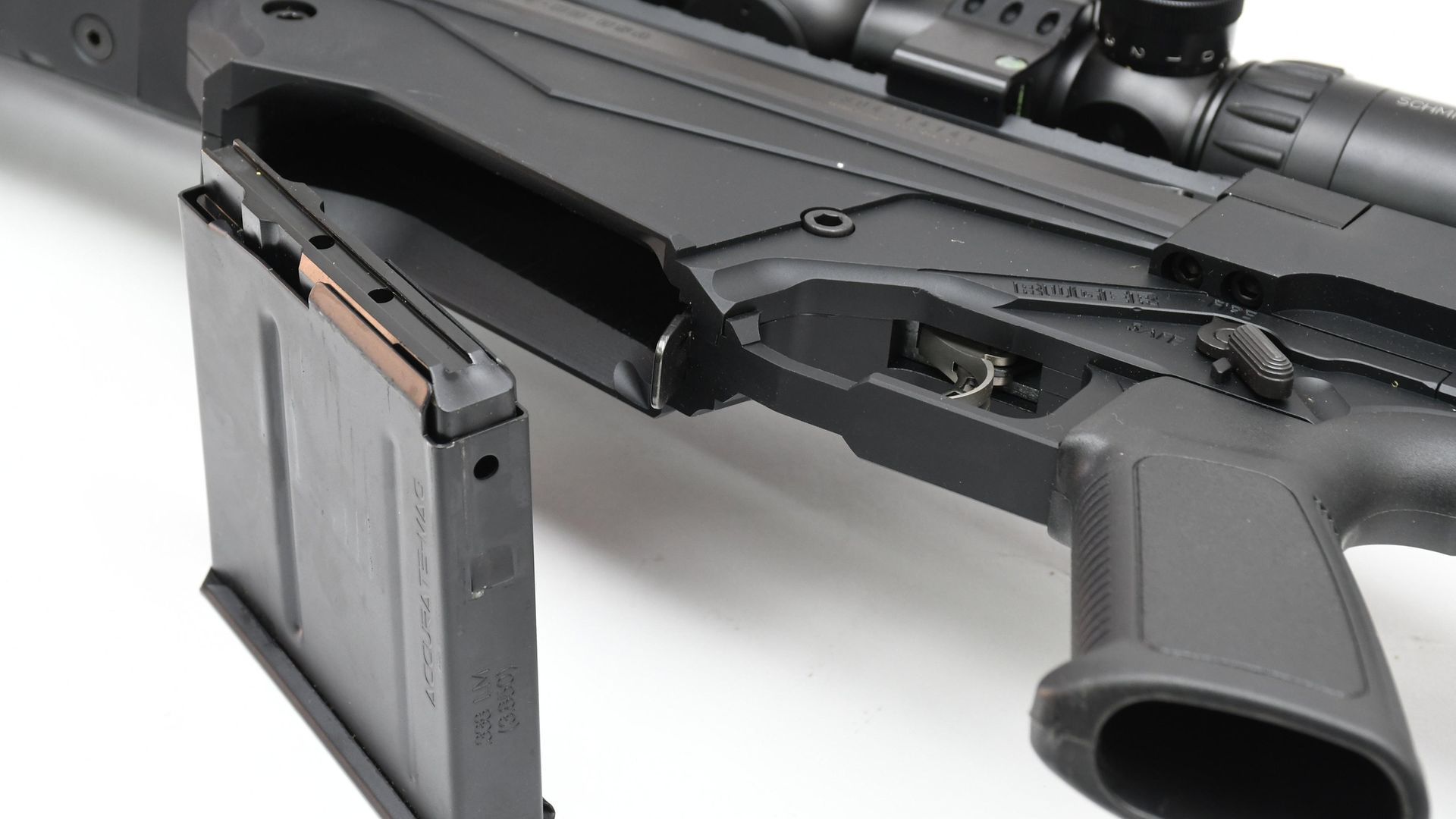 credit: Chris Parkin
credit: Chris Parkin
On a rifle most likely shot prone or from well-supported positions, and also not frequently requiring changes the initial set-up process is perfectly acceptable. Once set for me with a 14.5" LOP, it was comfortable and secure in the shoulder via the ribbed, firm and radiused edge 120x35mm recoil pad. Now is the time to mention the distance from the recoil pad to the bipod’s feet, which is 970mm or 38", the length of a short sporting rifle in total; this is where the superb stability appears from a long ‘wheelbase’ and, when prone, loading the bipod was tactile and reassuringly solid, allowing recoil control and minimised point of aim shift when shooting.
The front lower sites the mag well with release catch at the front of the trigger guard.
A barricade support is present if required. Two five-round detachable AI pattern steel box mags are supplied and present the ammo to a three lug, 70° lift bolt. The follower is polymer for less abrasion under the bolt when empty and steel construction offers durable long life of the feed lips. A single extractor claw on the right side, with a sprung ejector plunger on the left, performed flawlessly throughout the 40 rounds of use. It is a chunky beast, 25mm in diameter with 158mm dual cocking cams and a smooth-running, full diameter bolt body. Bolt body is nitrided for corrosion resistance, reduced friction during operation and durability.
The steel front end is attached to a tubular aluminium follower/shroud that stores trigger adjustment tools as well. Overall length is 290mm with a 70mm handle showing matt black teardrop end that can be swapped on the underside 5/16"-24 thread aftermarket. This long bolt and modest handle, coupled with leaf springs projecting from the shroud, leads to smooth cyclical operation, but there is more. I’m a bit of a mechanism purist and in a strange sort of way, like a Mauser 98, running this bolt has mechanical clicks and clunks in its 125mm stoke. This is nothing derogatory. I liken it to an unstoppable locomotive crossing railroad points and I strangely really like it. The bolt shaft, although cylindrical, shows a complex facetted underside to ease congestion with rounds sited in the magazine, which would otherwise foul it (and do on many rifles). These are factors that are unfairly ignored when saying the RPR looks a bit mechanical and are key factors in the excellent handling of the rifle.
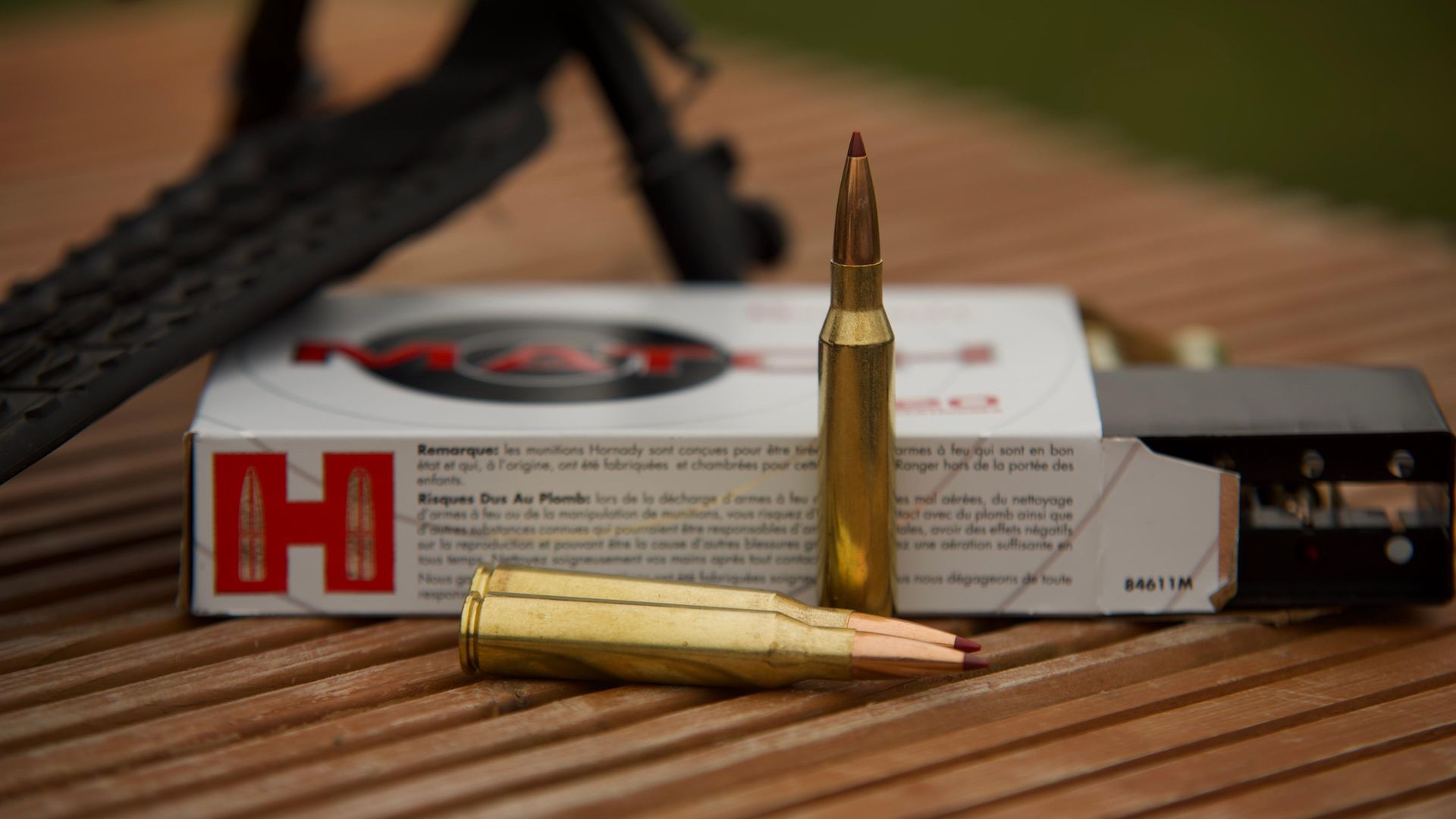 credit: Chris Parkin
credit: Chris Parkin
On to the ammo
Edgar Brothers supplied Hornady ammunition in 285gr ELD-Match, suggested to reach 2,745 fps with its 0.829 G1 BC bullet. I chronographed them at 2,832 fps, 3m from the muzzle. Hunting ammo using the 270gr, similar looking but controlled expansion ELD-X bullet for game (perhaps a little US market oriented) listed 2,800 fps and this also beat its target with 2,881 chronographed.
An unusual instance where ammo exceeds its suggested figures – perhaps testament to the 5R rifling pattern? ELD-X has a G1 BC of 0.757 and the data showed no concern for the intended 1,000m targets. Limited ammo quantities required a very focused review avoiding wastage! Zeroing at 100m immediately showed smooth recoil control from the rifle on a bench and the noise from the brake was well directed with no annoying stock resonance, which impressed me.
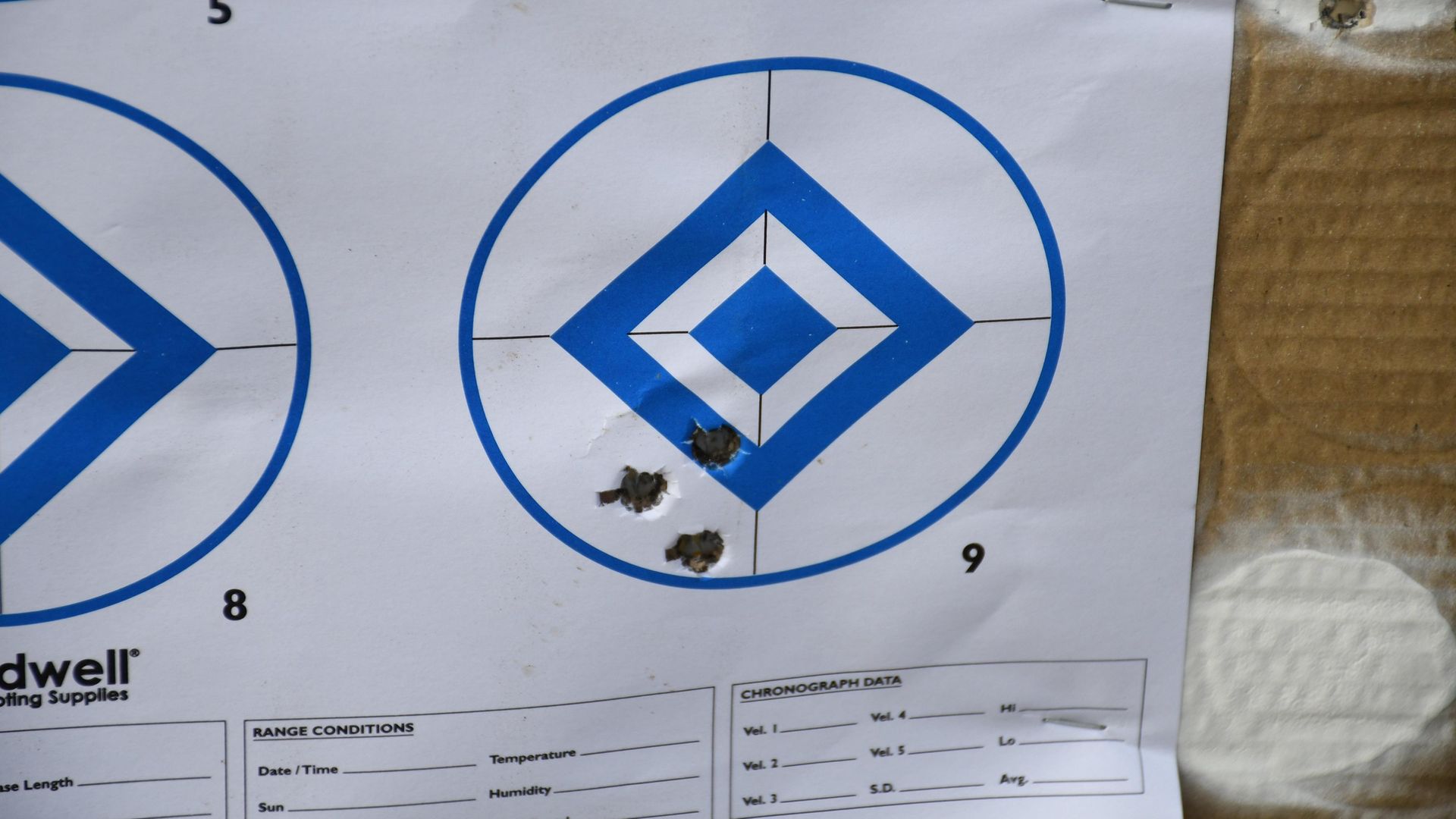 credit: Chris Parkin
credit: Chris Parkin
In the field
I shot from prone over gravel surfaces to assess blast pattern and no debris was scattered in my direction or under the muzzle, with an almost perfectly perpendicular blast wave. Physical recoil was more a push than a hit and the rifle tracked far straighter than many others. Without ammo to waste, I was in the Polaris and over to the top of the hill to take on 1,000m targets.
The weather was overcast and 10°C with extraordinarily little wind and I wasn’t going to waste ideal conditions. With a 100x50m-wide slate quarry backstop surrounding the steel target, bullet splash would be easily visible. I dialled on 10mRad as a previous DOPE guestimate for elevation had suggested that spin drift was pretty much negated by the wind direction. First round required 0.6mRad elevation adjustment and in the end I think I was running three clicks of windage (0.3 mRad) as an average firing solution.
The difference between the two ammo types was just 0.4mRad on average at that range with the slightly higher speed making up for the lower BC on the ELD-X compared to ‘M’ bullets. Both had managed sub-MOA on target when zeroing, where I had very cautiously wasted just eight rounds of my 40 – who wants groups when you can shoot steel at 1km?
Slight lateral wind shift and vertical bumps saw me leave the scope on 9.5mRad and I settled into shooting using aim off in the reticle to compensate for constantly changing conditions. Here is where long-range rifles get really interesting to me as you have to shoot quite quickly to make up for wind changes with regular corrections. I’m lucky with access to WMS, as the slate quarries shows bullet splash from major and minor misses very easily and this was a day where we filmed on the spotting scope because the riflescope and gun stability made for a superb spotting tool in their own right.
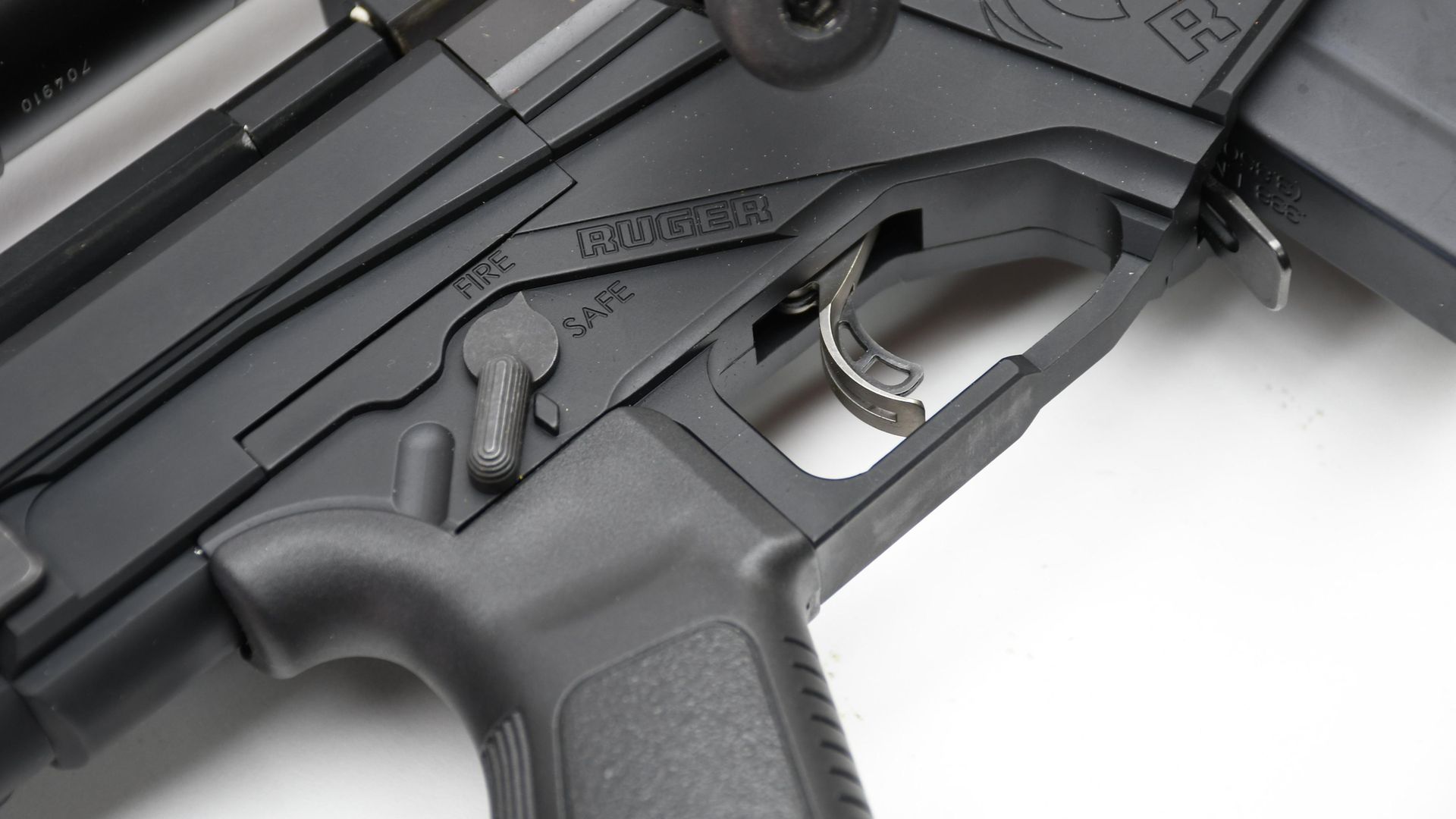 credit: Chris Parkin
credit: Chris Parkin
Being able to keep your head planted on the cheekpiece behind the optic through recoil is critical to seeing the bullet in flight and at destination; it takes only a tiny change in the wind to drift it tantalisingly close to the edge of a 500mm steel gong and here is where the Ruger most impressed me.
Recoil was very well controlled through physical mass and the directional brake’s tuned position to eliminate muzzle jump, here prone on firm grassy ground.
I was able to stay ‘on’ the rifle while cycling the bolt; scope alignment unaffected as I waited for the bullet to land. It takes 1.7 seconds to get there and the wait for the ‘clang’ to come back is even longer, but being able to reload and immediately compensate aim off, half a mil here, a quarter mil there using the reticle intuitively, rather than continuous dialling, means the next bullet is in flight less than two seconds after the last.
This significantly eased coping with wind changes where the previous shot is always your best indicator; as a consequence, you don’t spend time shuffling with the rifle and losing position and focus. The Ruger’s excellent bolt handling is also a plus!
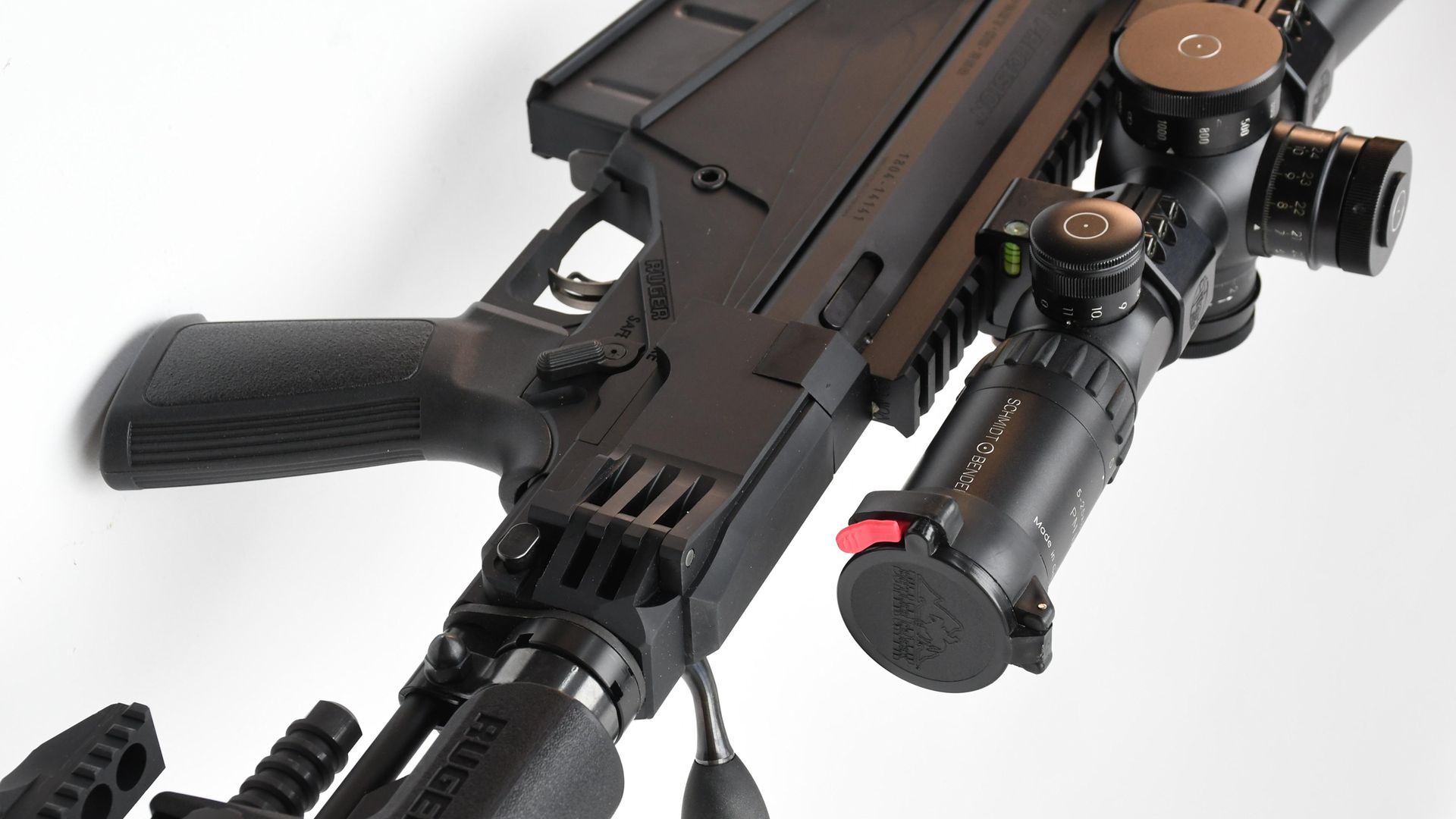 credit: Chris Parkin
credit: Chris Parkin
Behind the rifle
.338 shows a lot of ‘trace’ or ‘swirl’ as it flies, making spotting a little easier for those observing – the recoil pulse of the rifle obscures it for you as the shooter a little and that’s why minimising magnification and a generous eye box is helpful to maintain the sight picture during this split second.
I found the Ruger better for this than many other .338s. Final ballistic data that was calculated afterwards (I didn’t zero my turrets perfectly and the zero group was just below centre) shows supersonic flight from this combination beyond a mile (1,760 yards/1,609m) and enough remaining scope adjustment at 21 mRad to theoretically reach 1,700m thanks to the 30 MOA rail.
For me, the way the gun shot, not just groups on paper, is what impressed me, I enjoyed shooting it and many .338s can be a mind-numbing concussive hassle where 40 rounds would have been far more than I would have liked, never mind too few. The RPR didn’t initially appeal to me when first appearing six or so years ago, but it has grown on me ever since, partly because it inspired copies that just didn’t get it quite right in comparison from designers who missed the subtleties.
It’s not perfect, the stock’s back end is very angular and not the most comfortable on your knuckles for an underside supporting hand, or even when manipulating a bag, but it’s fair to say a monopod could be mounted if needed and Picatinny is a superb attachment feature that’s intrinsically uncomfortable in the hand.
The only thing I would do is add a hand stop/butt hook just to help in this area. I see lots of badly designed stocks on far gentler recoiling rifles and they are poorly shaped tapering profiles that your hand slides underneath, so the angular version here, although abrasive and offering hard edges certainly won’t slip and affect a single shot, even if it starts to tire a little after 40 rounds.
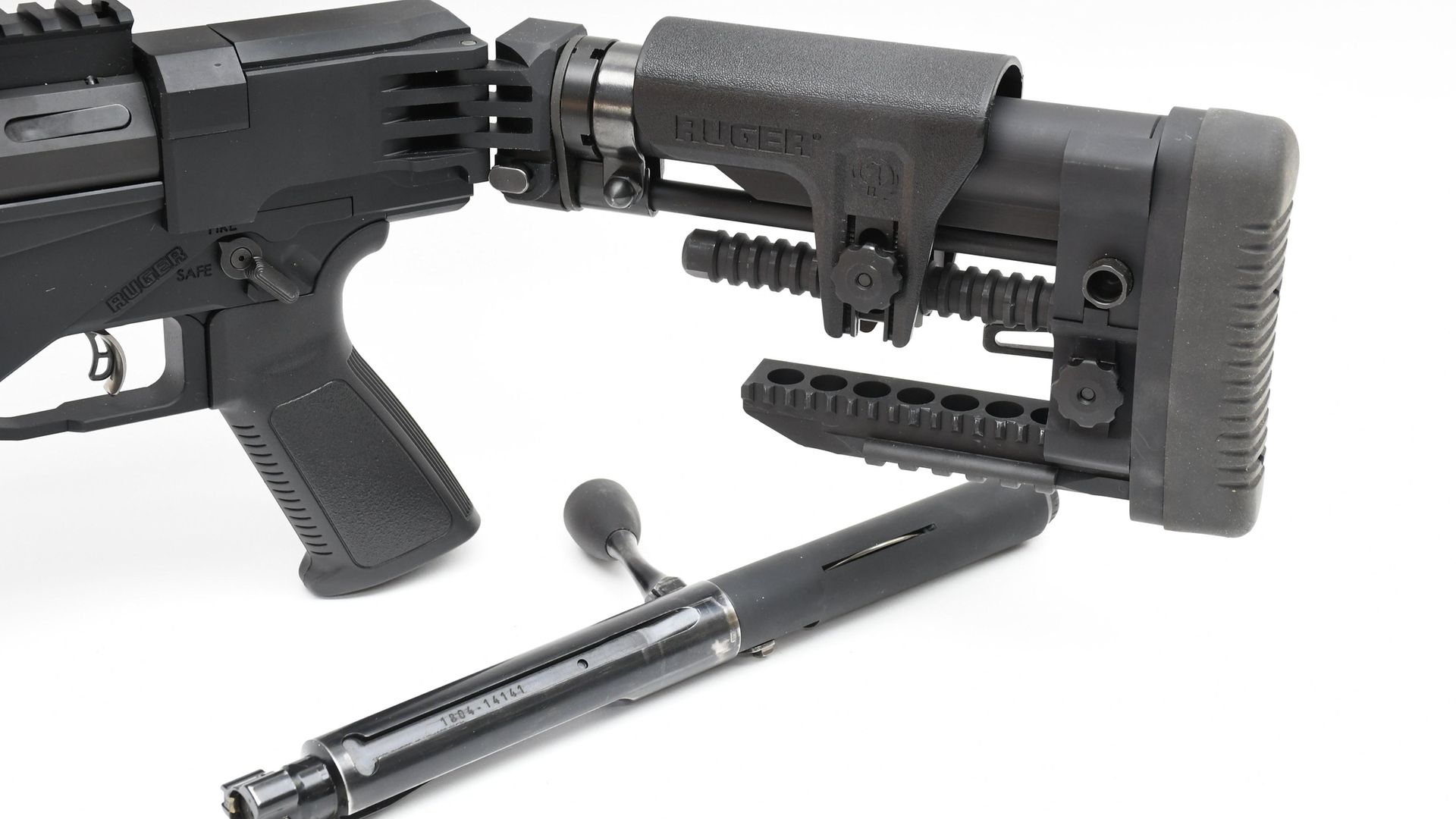 credit: Chris Parkin
credit: Chris Parkin
Also used
Hornady Ammunition
Edgar Brothers
Tel: 01625 6123177
Schmidt & Bender
Tel: 07719 567916
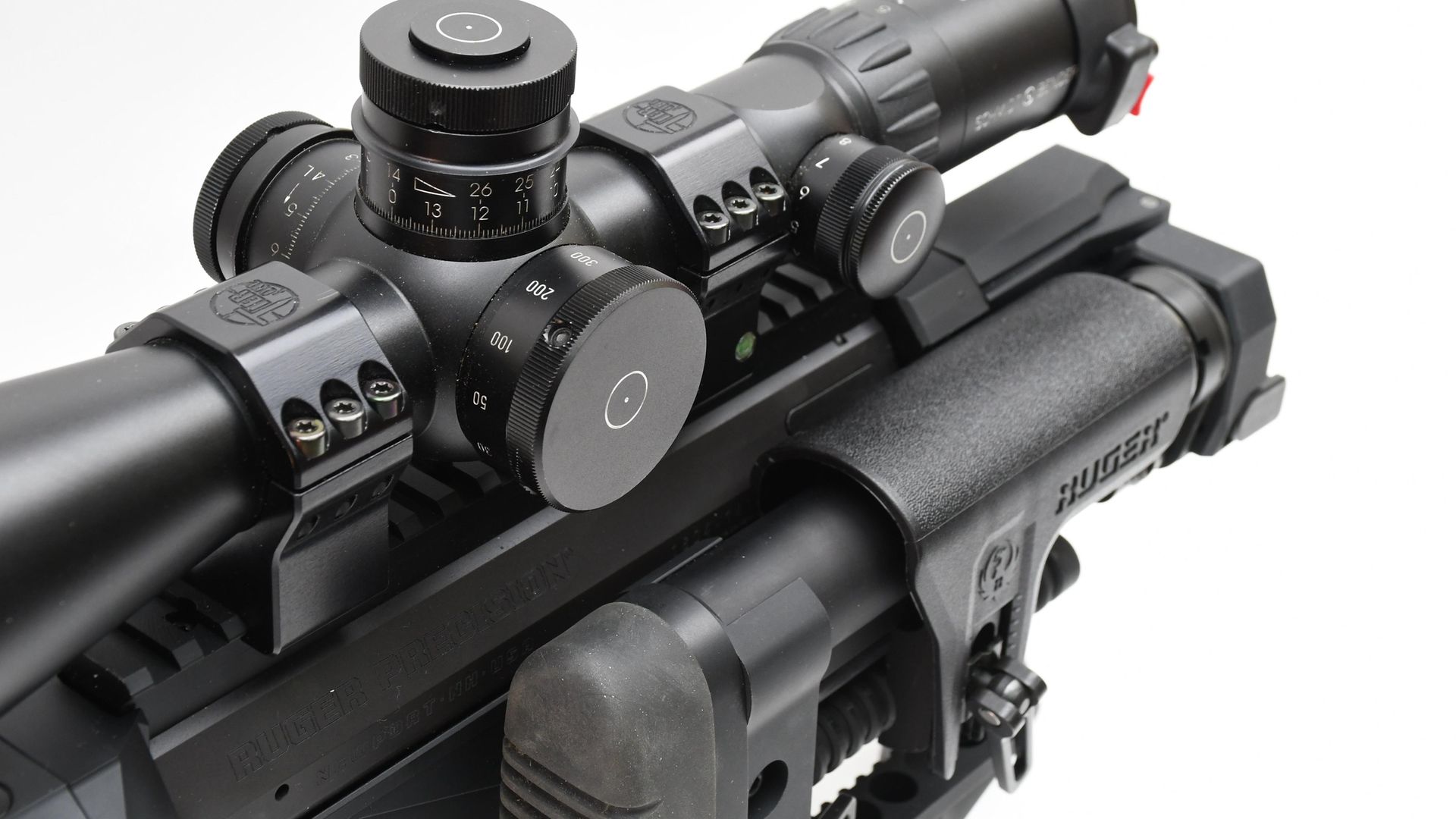 credit: Chris Parkin
credit: Chris Parkin
Tech specs
Calibre: 338 Lapua Magnum
Overall length: 1255-1355mm/49-53” (1035mm/40.75”)
Weight: 8.0kg/18bs
Length of Pull: 330-433mm/13-17”
Magazine capacity: 5 round detachable (+1 in the chamber)
Trigger: single stage, inner blade safety 830gr (30oz.)
Barrel length: 660mm-26” heavy barrel
Twist Rate: 1 in 8.375” twist
Stock: Aluminium chassis
Scope mounting: 30 M.O.A. Picatinny rail included
Suggested retail price: £2,500
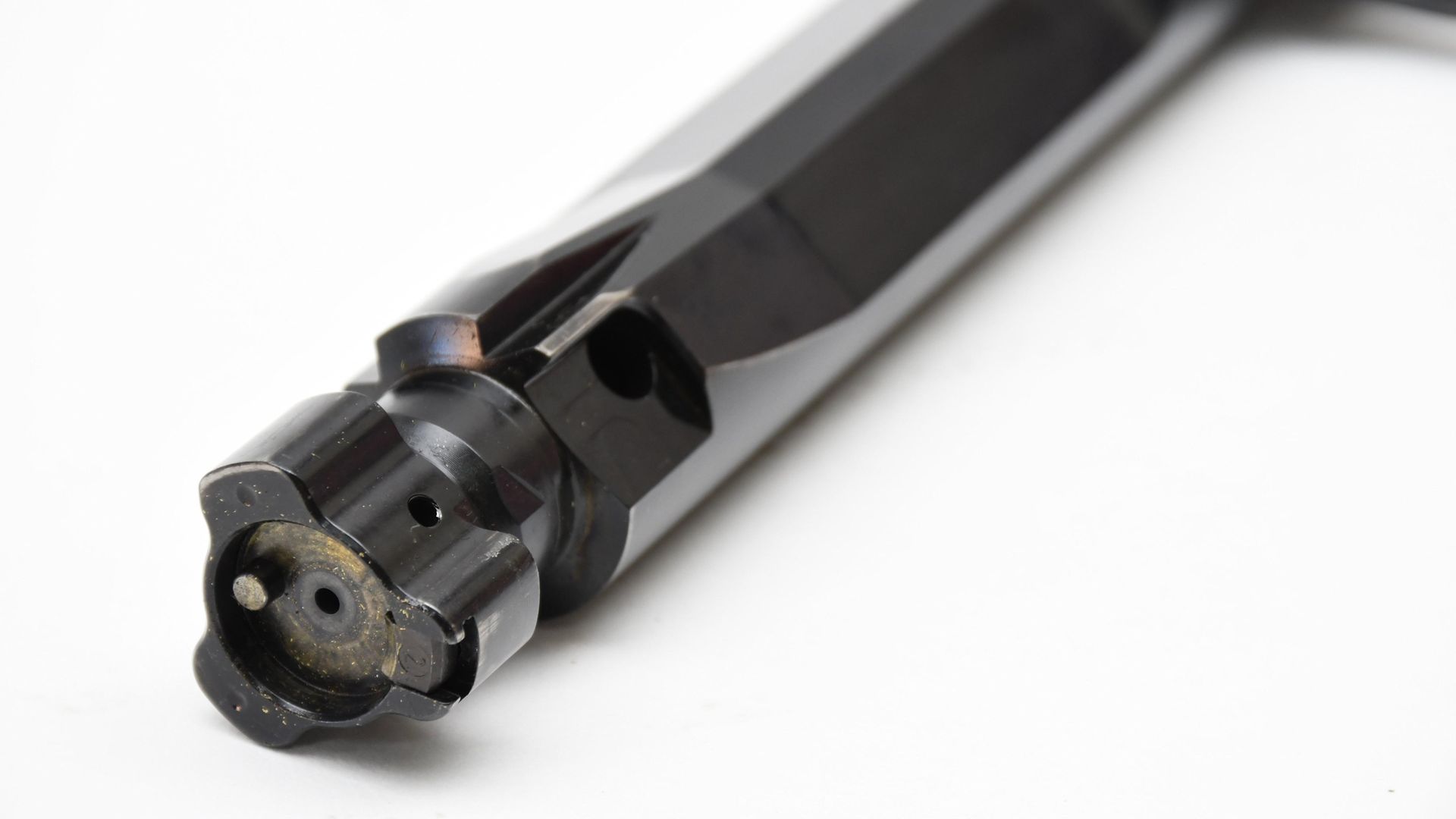 credit: Chris Parkin
credit: Chris Parkin
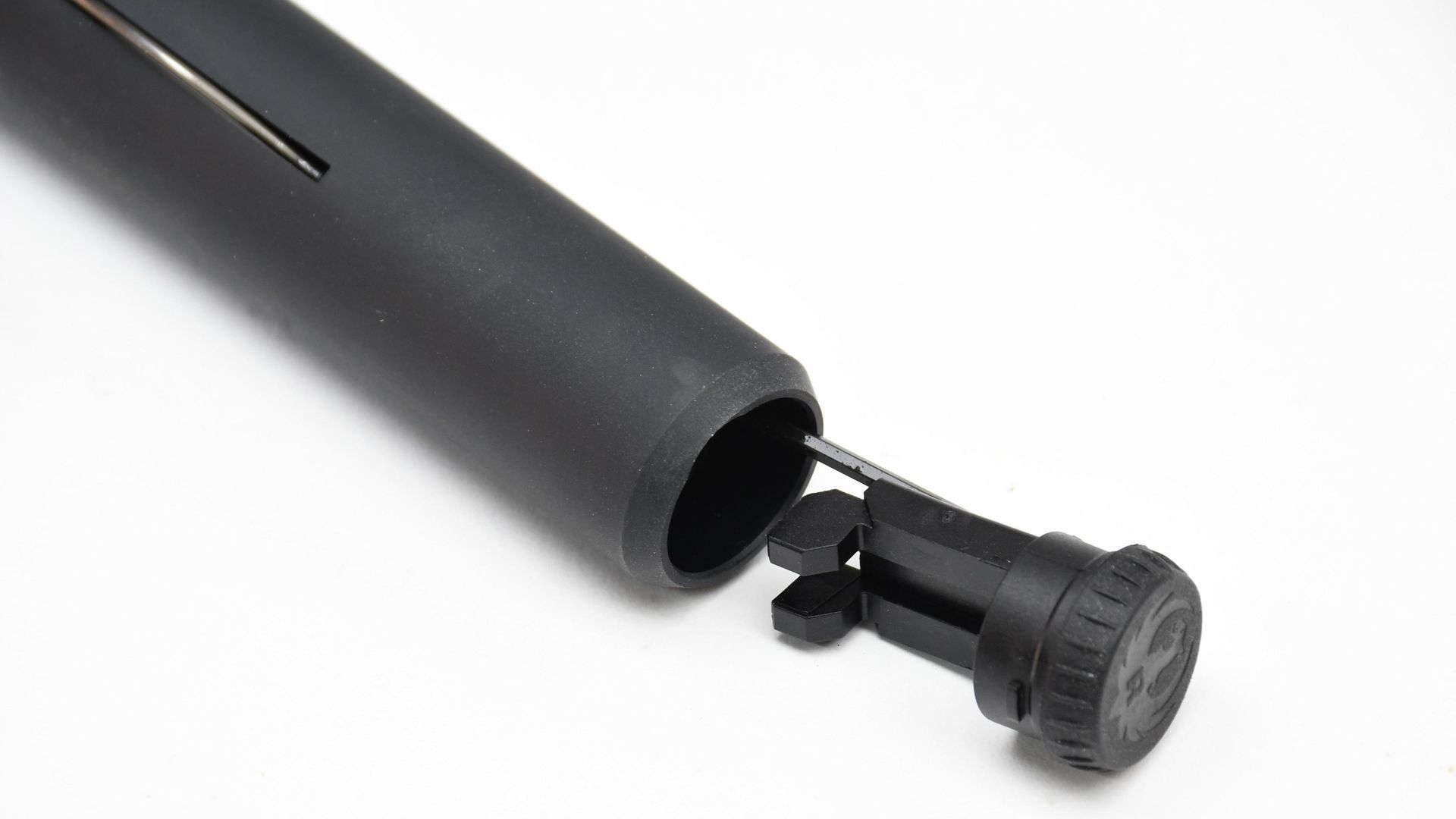 credit: Chris Parkin
credit: Chris Parkin
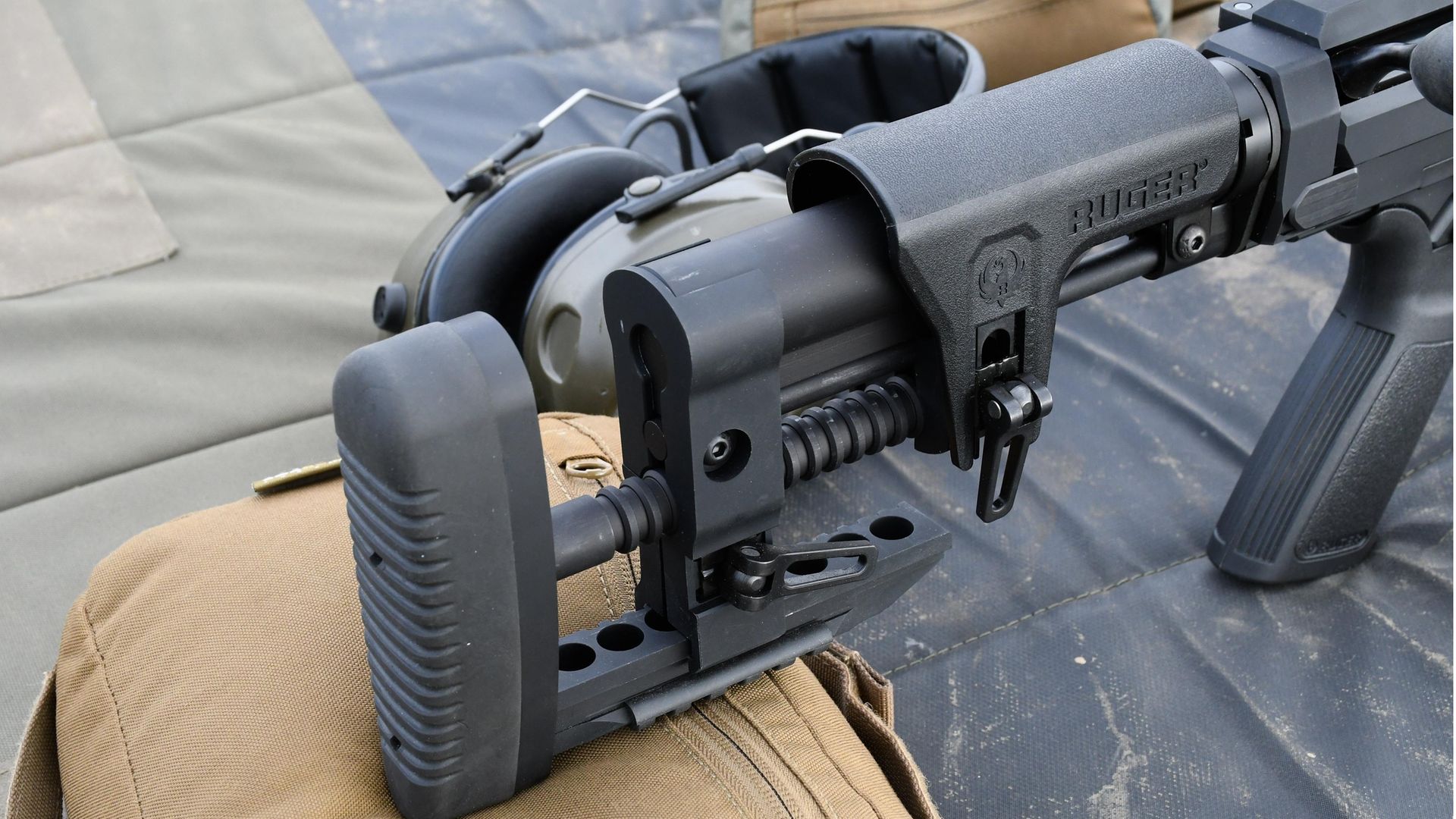 credit: Chris Parkin
credit: Chris Parkin